The US Environmental Protection Agency (EPA) has been developing ToxCast, a set of 500 in vitro tests to predict the effects on humans of chemicals that may be released into the environment. Since the programme started in 2008, the results have been compared with existing animal data, which had been viewed as the ‘gold standard’ in the past.
Now, in a drive to improve the ability to predict toxicity in humans, the EPA has joined forces with several pharmaceutical companies to test over 100 drugs that failed in human clinical trials because they were dangerous, despite passing the standard tests in animals. This will provide a new ‘gold standard’ on which to build prediction models from ToxCast data.
‘There’s still a lot of work to do, but I think it has a lot of promise to move toxicology into the 21st century’ – Dr George Gray, expert in risk & public health at George Washington University & former science advisor in the EPA’s office of research & development
A related initiative is Tox21: a joint programme of the EPA and US National Institutes of Health, which is also focused on improving risk assessments for environmental chemicals. In an exciting development, which mirrors that at ToxCast, the Food and Drug Administration (FDA) has joined the programme to add much-needed human data (on pharmaceuticals) that the other agencies don’t possess. This allows researchers to better predict human outcomes.
The collaboration is built around a database that will include 3,000 pharmaceutical and 7,000 environmental chemicals. Testing chemicals using the new system, based on automated high-throughput screening of human cells, takes between one and five days, which contrasts favourably with animal tests lasting a month. Longer-term animal studies, such as those used to assess cancer risk, take two years and use 800 mice and rats. The average cost of a longer-term animal test was $5.2 million in 2000, according to the Journal of Health Economics.
‘We want to migrate away from animal testing. We also want to see drug development become more efficient so that fewer resources are wasted’ – David Jacobson-Kram, executive director for pharmacology and toxicology, FDA
Refs: ChemistryWorld.org, 18 May 2010, Bloomberg News, 5 August 2010

MND is a devastating disease, whose most famous sufferer is Cambridge astrophysicist Professor Stephen Hawking. The MND Association is funding an exciting international study involving teams from Edinburgh University, King’s College, London and Columbia University in New York, based on human motor neurons created from MND patients’ skin cells.
The skin cells are initially ‘reprogrammed’ to generate induced pluripotent stem cells (iPS cells) which are then induced to turn into the brain cells of interest. The ability to grow and programme human motor neurons in the laboratory has been a holy grail for MND researchers for many years.
‘Bringing together the genetic revolution of the last decade with the spectacular progress in stem cell research means we can now model human disease in a dish’ – Prof Siddharthan Chandran, principal investigator
Ref: MND Association news release 24 May 2010
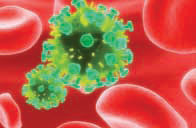 AIDS yields secrets to human biology research
AIDS yields secrets to human biology research Researchers have discovered a mechanism that helps to explain why some HIV-infected people do not go on to develop AIDS. The discovery was made using a mathematical model, based on human clinical observations, which has provided deep and predictive
insights into the behaviour of the human immune system.
‘Rarely does one read a paper that stretches the mind so surprisingly far’ – Nobel Laureate Professor David Baltimore, Massachusetts Institute of Technology
Ref: TheScientist.com, 5 May 2010
‘The failure of [clinical trials] suggests that we are obviously getting something wrong, so it was quite important to make the change’ – Dr David Menon, Cambridge University researcher who no longer studies brain injury in lab animals, preferring to use human data
Every year 66,000 people are killed by traumatic brain injury (TBI) in Europe alone. Yet there are still no effective treatments, despite decades of trials based on animal studies.
Researchers studying patients realised that women frequently recover better than men with TBI. This has led to a clinical trial involving administering a female hormone, progesterone, to patients with TBI. Results so far have been encouraging and the outcome of the ongoing trial is eagerly anticipated.
Ref: The Scientist 24 (7): 37
Canadian scientists have developed microfluidics chips to enable fragile blood vessels to be studied easily and cheaply, without the highly skilled handling usually required to conduct such studies. The device will enable thousands of potential new drugs to be routinely screened for their effects on blood vessels, including changes in blood pressure, for example.
Ref: Lab on a Chip 2010, DOI: 10.1039/c004675b
Antibodies are one of the fastest-growing drug classes in human healthcare. They are also important in the diagnostics and research markets. AbD Serotec, based in Kidlington, uses in vitro technologies to create fully human antibodies as research tools, diagnostics and therapeutics.
Using the unique HuCAL® (Human Combinatorial Antibody Library), they offer a choice of more than 45 billion antibodies and a success rate of 98%, compared to the average success rate of around 75% for classic animal-based antibody generation methods.
Ref: Drug Discovery & Development, 18 March, 2010
German company ProBioGen has developed a novel technology which can be used to reliably assess human immune reactions to a given substance prior to its use in humans.
‘By enabling the assessment of immune reactions in a fully human system… we circumvent the limitations associated with the use of animal models… enabling our customers to run a more efficient drug development process’ – Dr Uwe Marx, co-founder of ProBioGen
Viennese company AFFiRiS is using the human artificial lymph node to test their vaccines (designed by the novel in vitro technique of molecular mimicry) before they enter into clinical trials.
Ref: ProBioGen news releases 2 June 2010 and 12 December 2007
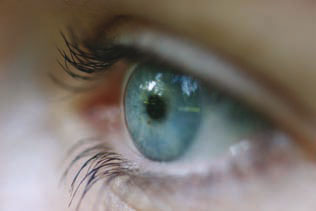
The cornea is the clear covering at the front of the eye. It is crucial to test the cornea for sensitivity to any drugs or chemicals that the eye may be exposed to.
International Stem Cell Corporation in California has succeeded in growing corneas from human ‘parthenogenetic’ stem cells, using unfertilised eggs, rather than embryos; thus obviating ethical concerns about embryonic stem cells. They have demonstrated that the lab-grown corneal tissue closely mimics the drug absorption and metabolism characteristics found in normal corneal tissue; thus offering a superior means than live animals to test the safety of ophthalmic drugs and consumer products.
Researchers hope that in the future it may also be possible to use the tissue for corneal transplants, an area of acute unmet need, particularly in India and Asia, where millions of people suffer from corneal blindness that now goes untreated.
Ref: www.internationalstemcell.com news release 10 May 2010
Researchers studying cancer cells in 3 dimensional cultures have discovered key differences between cancer cells moving in 3D, as they would in the body, and those moving in 2D, as is most often the case when cells are grown in the lab. They have used their culture systems to investigate key enzymes involved in regulating cell movement. This avenue of research is crucial, since it is metastasis – cancer spreading to other organs – which usually kills patients.
Ref: ScienceDaily.com 22 June 2010
Good news for scientists wishing to conduct more of their research in 3D (see story above): researchers have discovered that by impregnating filter paper sheets with collagen, it is possible to build up a 3D system to support cell growth. Then, when you need to test a sample of your cell culture, you simply peel off a sheet!
Ref: The Scientist 24 (6): 27
Organisations in 10 countries have launched a collaboration to decode the genomes from 25,000 samples of cancer cells. The resulting comprehensive catalogues of abnormalities for 50 different types of cancer will pinpoint new cancer genes, which will eventually lead to tailored treatments.
‘This project will have a great impact on cancer treatment’ – Professor Mike Stratton, leader of the project in the UK
In 2000 Professor Stratton and colleagues discovered the BRAF gene mutation often found in malignant melanomas. Now, phase 3 clinical trials are under way on a treatment, the outcomes of which, he says, are looking positive.
Professor Stratton said, ‘70% of patients with malignant melanoma who have this mutation respond to this new inhibitor. We’re full of optimism about it. It took 10 years from us finding the gene to getting to a phase 3 clinical trial. That sort of story will be replicated multiple times.’
Ref: British Medical Journal 2010; 340: c2149
Neuroscientists at The Ohio State University College of Medicine conducted a 5 year study of 1,500 mice to compare the growth of induced tumours in mice living in enriched environments versus those in normal barren cages.
The results were dramatic: tumours of mice living in enriched environments before inoculation with cancer cells were 77% smaller than those in control mice, or even absent altogether.
The researchers, of course, believe their findings will have implications for cancer prevention and treatment in humans. Another obvious implication is that drugs being tested in mice will show entirely different effects, depending on the housing conditions. One company or lab may conclude that a new drug prevents or treats cancer, while another may conclude that the same drug causes cancer.
Ref: L Cao et al, Cell 142: 52, 2010.
 Fat rats skew results
Fat rats skew results In a similar vein, a group at the US National Institute on Aging in Maryland discovered that many rats and mice used in experiments are so overweight that they are glucose intolerant and heading for an early death. As a result, data from the animals — about, for example, the effects of an anti-cancer drug — may not apply to normal-weight animals – and, of course, still less to humans.
‘Failure to recognize that many standard control rats and mice used in biomedical research are sedentary, obese, glucose intolerant, and on a trajectory to premature death may confound data interpretation and outcomes of human studies’ – Bronwen Martin and colleagues, National Institute on Aging, Maryland
Ref: PNAS 2010 107(14): 6127
Published animal trials overestimate by about 30% the likelihood that a treatment works because negative results often go unpublished, a study suggests.
The team, led by Professor Malcolm Macleod, studied a stroke database called the Collaborative Approach to
Meta Analysis and Review of Animal Data from Experimental Stroke (CAMARADES), established in response to poor translation of animal findings to clinical trials. They found that as many as 1 in 6 experiments remain unpublished.
Professor Macleod asserts that not reporting the negative results of animal trials is unethical, because it squanders animals and leads to premature human trials.
‘Participants in clinical trials may be put at unnecessary risk if efficacy in animals has been overstated’ – Professor Malcolm Macleod and colleagues, Centre for Clinical Brain Sciences, University of Edinburgh
Of course, this biased reporting should be addressed. There should be a registration system for animal studies, as there is for human studies. But publication bias cannot explain why more than 150 stroke treatments successful in animals have failed in humans! Clearly there is a more fundamental problem; namely that animals simply do not predict human responses.
‘The repeated failures of laboratory proven stroke therapies in humans can be due only to the inapplicability of animal models to human cerebral vascular disease’ – neurosurgeon Dr Samuel Neff, New England Medical Centre, Stroke, 20: 699 (1989)
Ref: PLoS Biol 8(3): e1000344
‘Drugs get approved without anyone being able to know how effective they really are or how much serious harm they will cause’ – Donald Light, Professor of comparative health policy, University of Medicine & Dentistry, New Jersey
Prof Light’s study includes data from independent reviewers suggesting that 85% of new drugs provide few, if any, new benefits. Yet they consume four-fifths of all drug costs!
He calls for basic improvements in the way drugs are tested and approved in order to address the ‘risk proliferation syndrome’ and increase the percentage of new drugs that are actually better for patients. His new book, The Risk of Prescription Drugs, is due to be published this autumn by Columbia University Press.
We agree that Professor Light’s proposed reforms are necessary to save lives. Moreover, we believe that a shift of focus from animal studies towards human biology would make a major contribution to that end.
Ref: Daily Telegraph 17 August 2010
 Tamiflu revelations
Tamiflu revelationsIn June 2009, the World Health Organisation declared swine flu a pandemic, which triggered the stockpiling of antiviral drugs and vaccines in many countries, including the UK, that are now trying to offload £billions worth of surplus stocks.
A cross party group of Council of Europe parliamentarians has accused pharmaceutical companies of using scare tactics to influence governments:
‘They have made them squander tight healthcare resources for inefficient vaccine strategies and needlessly exposed millions of healthy people to the risk of unknown side effects of insufficiently tested vaccines.’
The UK government stockpiled over 30 million doses of Tamiflu, based on claims by Roche, the manufacturer, that it reduces complications of flu (including bronchitis and pneumonia) by 67% in otherwise healthy people.
But a joint investigation by the British Medical Journal (BMJ) and Channel 4 News, plus an independent review by the Cochrane Collaboration, based on evidence available so far, revealed that the benefits of Tamiflu in reducing complications, as claimed, appear to be vanishingly small.
The investigation uncovered a catalogue of secrecy and restricted access to crucial trial data, which speaks volumes about the lack of transparency in drug evaluation and how health policy is decided.
Interestingly, the US drug regulator, the Food and Drug Administration (FDA) says that Tamiflu has not been shown to reduce complications, while the European Medicines Agency (EMEA) concludes that it does.
‘The current system [for assessing drug safety and effectiveness] isn’t working. Worse than that, it gives a false sense of security…. Why should the public have to rely on detective work by academics and journalists to patch together the evidence on such a potentially important drug? When vast quantities of public money, and large amounts of public trust, are placed in drugs, the full data must be accessible for scrutiny by the scientific community’
– Dr Fiona Godlee, Editor, BMJ.
Ref: BMJ 8th December 2009 and 12th January 2010.
Tragically, the example of Tamiflu and the suppression of crucial data is by no means an isolated case. Biased reporting and non-reporting of clinical trials is a major problem in medicine, distorting evidence about whether a treatment is helpful or harmful and harming and even killing untold numbers of patients as a consequence.
Leading medical journals announced in 2005 that they would only publish trials registered in advance, to prevent subsequent cover-ups. But a new study reveals that companies are still failing to properly register a majority of trials. Of those that are registered, a third are later manipulated to substitute outcomes that did not favour the drug in question with positive findings on a different outcome instead.
Dr Ben Goldacre quotes the astonishing example of all the published studies where one non-steroidal antiinflammatory drug was compared to another: ‘In every single trial, the sponsoring company’s drug was either equivalent to, or better than, the drug it was compared to: all the drugs were better than all the other drugs. Such a result is plainly impossible.’
Clinical trials ‘have become the primary marketing tools of pharmaceutical companies’
– Dr David Healy, Cardiff University.
The Oncologist medical journal reported that drug companies published fewer than 6% of all the clinical studies they undertook to test their drugs. Bad results in the other 94% are buried simply by failing to publish them.
‘Scientists since Galileo have realised you can’t be a scientist without data’ – Aubrey Blumsohn, whose concerns about access to Procter and Gamble’s research data on the osteoporosis drug risedronate cost him his job as senior lecturer in metabolic bone medicine at Sheffield University and led him to abandon his career as a clinical researcher.
A study in November’s Archives of Internal Medicine, aimed at preventing another Vioxx by uncovering side effects more quickly after a drug is marketed, proposes a constantly updated public database that could be analysed freely by independent researchers.
‘There is this kind of dogma in medicine that you shouldn’t use any drug for the first seven years after it’s released, because it takes that long to figure out its harms and benefits’ – Dr. Michael Steinman, assistant professor of medicine, University of California, San Francisco.
References: Journal of the American Medical
Association 2009;302(9):977
BMJ 2009;339:4949
The Oncologist 2008;13:925
BMJ 2009;339:5293
New York Times, 23rd November 2009
All of the above is a damning indictment of the system that is supposed to ensure our medicines are safe and effective. It is unarguable that governments should mandate ready access to the raw data behind any analyses used to license and market a drug.
That must include animal data, since crucial decisions, such as whether to proceed to clinical trials and whether the drug might cause cancer or birth defects are based on demonstrated safety in animals.
Yet, as we know from Northwick Park, even safety in monkeys at enormous doses does not guarantee safety in humans. In fact, a seminal study in the Journal of the Royal Society of Medicine (2008;101:95) shows that even safety in both dogs and monkeys provides no prediction of any value that the drug will be safe for humans.
Alarmingly, despite all the above-mentioned flaws in reporting of clinical research, it is still of a far higher standard than the reporting and conduct of animal research, as stroke research group Camarades (www.Camarades.info) has found: ‘This lack of advanced scientific methods leaves many questions about the value of animal research unanswered’ – Professor Michael Bracken, Yale University.
A large systematic survey published in November 2009 found serious omissions in reporting of data and in strategies to reduce bias in results. Only 12% of the animal studies used randomisation, only 14% used blinding and only 8% gave the raw data. The National Centre for the Replacement, Refinement and Reduction of Animals in Research (NC3Rs), which cofunded the study, concluded that serious efforts are needed to improve both the quality of experimental design and the quality of reporting of biomedical research using animals. They commented: ‘The entire scientific community is reliant on published experiments being appropriately designed and carried out, and accurately and transparently reported, as this has implications for the scientific validity of the results… and the suitability of these animal studies for translation into clinical trials.’
Sir Iain Chalmers, of the James Lind Library, Oxford, and Professor Paul Glasziou, of the Centre for Evidence-Based Medicine, University of Oxford, wrote in a study published in The Lancet (374, 9683: 86, 4th July 2009) that over half of clinical trials are designed without reference to previous research on the same question. This causes duplication of effort and exposure of patients and research volunteers to avoidable risks. They conclude that inadequate planning, design, reporting and publication of studies probably waste between 50% and 85% of global research funds (of over US$100 billion).
As Sir Iain Chalmers has said before (in a presentation to the Scottish Wellcome Trust Clinical Research Facility, 30th June 2005): ‘Failure to prepare scientifically defensible reviews of relevant animal and human data results not only in wasted resources but also in unnecessary suffering and premature death.’
Animal data used to justify claims that a drug is safe should be open to full scientific scrutiny, just as all data from human trials should be. The best way to evaluate the effectiveness of animal tests for drug safety is to compare their results with subsequent realworld outcomes in patients and consumers. The Safety of Medicines (Evaluation) Bill and a series of Early Day Motions, which we have initiated, call for that comparison to be conducted, alongside a comparison of the performance of the latest human biology-based tests, to see which methods are superior.
Support for our proposal is substantial and growing amongst MPs, biotech companies, the human tissue research community and – crucially – major pharmaceutical companies. Getting the comparison conducted is an urgent priority, which it is high time the Government recognised.
Reference: Kilkenny, C et al, PLoS ONE 4(11): e7824.

Researchers at Newcastle University have observed spontaneous epileptic activity in brain tissue removed from patients during surgery as part of their treatment.
Thanks to this breakthrough, they have discovered why traditional drugs which target chemical release from nerve cells are ineffective in almost a third of patients: the signals which send these patients’ brains haywire are electrical rather than chemical. Although brain disorders are notoriously difficult to mimic in the lab, this sort of insight could only be obtained by looking at real patients, rather than animal ‘models’. Now scientists have high hopes that they will be able to find effective drugs to help such patients – of whom there are an estimated 45 million worldwide – so that they will no longer have to resort to surgery.
‘Until now we have only been able to mimic epilepsy using experimental animal models but this can never give you a true picture of what is actually going on inside the human brain in epilepsy’
– Dr Mark Cunningham, Institute of Neuroscience, Newcastle University.
Reference: ScienceDaily.com, 1st December 2009
‘It feels like we’re on the cusp of a revolution. This is a breakthrough – to take human cells and use them to make the tissue involved in the disease’
– Dr. George Daley, Associate Director of the Stem Cell Institute at Children’s Hospital Boston and Co- Chairman of Ipierian’s scientific advisory board.
Scientists have taken skin cells from a patient with a rare heart disorder and turned them into heart cells.
The skin cells, which are obviously much safer & easier to extract than heart cells, are specially treated so that they become stem cells – the cells which eventually give rise to all the cells in the body. These are then ‘reprogrammed’ in the lab so that they turn into heart cells with the same problem seen in the patient. Thus scientists have an endless, safe & ethically obtained supply of defective human cells. They can be used to study the basic biology of the disease, and perhaps most promisingly of all, to design and test new drugs.
Around the world, skin cells have also been turned into muscles, nerves, kidney, liver & other organs from patients with devastating genetic diseases. John Walker, CEO of Ipierian, a company which develops & uses these cells to discover treatments, believes that using human cells instead of animals will not only give more accurate results, but could also cut the time taken to get drugs to patients by years.
Reference: Forbes Magazine, 5th October 2009
Leeds-based Kirkstall has developed an advanced commercially available cell culture system which links human cells from different organs of the body together to form a ‘quasi vivo’ mimic of the human body.
Drugs can be added to the ‘body’ and the complex interactions between the different ‘organs’ observed. For example, the liver is crucial to drug metabolism, and the effect of the drugs’ metabolites on a variety of organs can be determined simultaneously. The result is a more accurate – and economical – model of what will happen in people, and they are currently working hard to validate it.
Kirkstall believes that barriers to the adoption of sophisticated human biology-based techniques are regulatory rather than technological, as regulatory agencies have simply grown accustomed to relying on animal test data.
US company, Hurel (Human-relevant) has developed a system designed to achieve similar results, and spoke at our Speed & Safety in Drug Discovery conference at the Royal Society in 2008 (see their presentation at www.drugtestingconference.com). By eliminating the time, money and potential inaccuracies associated with animal testing, Hurel estimates their test could shave $100 million off the roughly $1 billion cost of developing a new drug.
Reference: outsourcing-pharma.com, 20th October 2009
A 3 year project, called Toxichip, is being funded by the European Union to develop two types of biochip: one using bacteria engineered to change colour in the presence of dangerous chemicals in the environment, and one for the toxic assessment of chemicals using cultured human cells. The latter chip will find use, not only in evaluating chemicals for environmental risk, but also in looking at drug safety. The chip will allow cellular responses to drugs (or chemicals) to be assessed in combination, which is important as many patients need to take more than one drug at a time, and people may be exposed to many agents simultaneously in the environment. By incorporating microfluidic, electronic and computer technologies, the aim is to produce chips that can be used quickly, simply and cheaply to assess the risks posed by new drugs or chemicals more accurately than animal tests.
Reference: RTÉ News 30th November 2009
In another example of innovative UK companies rising to the challenge of developing human biology-based tests, University of Oxford spin-out Zyoxel is using bioreactor technology to grow human tissues in environments closer to those the cells experience in the body.
‘Recent research has shown our technology can be used to culture more realistic cancer tissue for testing, offering a powerful new tool for cancer drug discovery programmes’
– Prof Cui, University of Oxford & Zyoxel technology co-inventor.
This boosts test accuracy, cuts drug development times & potentially slashes costs by at least 10%. As Zyoxel CEO Dr Tim Hart estimates that failure to detect toxicity early in drug development costs the industry about £5 billion each year, the impact could be huge.
The company’s advances have not gone unnoticed as far afield as China, where a company keen to have such technology on-board has invested £1million to help fund test development.
Reference: Oxford Mail, 19th July 2009
Scientists have unlocked the entire genetic code of two of the most common cancers – skin and lung –identifying 90% of the mutations in two human cancer cell lines. Not only will these ‘mutational signature’ maps pave the way for blood tests to spot tumours far earlier, they will also yield new drug targets, says the Wellcome Trust team.
‘This is a landmark moment in cancer research. From this moment on, this is going to be our expectation for what we want to know about individual cancers – it resets our ambitions for cancer’ – Professor Michael Stratton FRS, Wellcome Trust and Institute of Cancer Research.
Reference: TheScientist.com, 16th December 2009
A member of the public who donated blood to biotech company VaxDesign as part of their programme developing in vitro immune systems has discovered that he had leukaemia much earlier than would ever have been picked up by conventional tests. Scientists at the company recognised abnormalities in his blood sample and flagged this up with his doctor. After discussions between the researchers & the donor’s doctor, tests were identified that could help pinpoint what was the matter – although it took a further month for conventional tests to identify the same changes that VaxDesign’s technology had shown up. It would probably have taken another seven years before the problems the gentleman had were diagnosed conventionally.
VaxDesign’s “immune system in a test tube” technology is currently being used for vaccine and immune-modulating drug testing, and can also be employed to predict how any individual will respond to a new drug or vaccine, advancing the goal of personalised medicine. It’s hoped that VaxDesign’s technology will now also lead to vast improvements in diagnostics, being far more sensitive as well as faster and cheaper.
After the diagnosis, the grateful donor asked if he could make a testimonial about what the technology did for him, which you can view here: http://www.youtube.com/watch?v=1wNWv_a-upc
Dr Peter Kohl, a researcher at Oxford University, where Professor Denis Noble pioneered the virtual heart (see our film, Safer Medicines) is driving research into the use of computer models to improve heart surgery. His team aims to use heart scans combined with modelling to investigate surgical options before the patient is operated on, to ensure they receive the best treatment first time. His research is part of an international drive to model the human body known as the Virtual Physiological Human initiative.
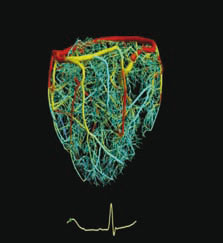 Meanwhile, the US Food and Drug Administration, the world’s largest drug regulator, has entered into a partnership with Entelos, a company which specialises in modeling patients and even whole clinical trials. Their advanced computer simulations, which they liken to ‘flight simulators’ for predicting how a drug will react, will be used to focus particularly on risks associated with the heart, to try to improve the safety of drugs released onto the market. It is believed that had the Entelos system been available at the time, the Vioxx painkiller tragedy, where tens of thousands of patients died of heart attacks and strokes, could have been avoided.
Meanwhile, the US Food and Drug Administration, the world’s largest drug regulator, has entered into a partnership with Entelos, a company which specialises in modeling patients and even whole clinical trials. Their advanced computer simulations, which they liken to ‘flight simulators’ for predicting how a drug will react, will be used to focus particularly on risks associated with the heart, to try to improve the safety of drugs released onto the market. It is believed that had the Entelos system been available at the time, the Vioxx painkiller tragedy, where tens of thousands of patients died of heart attacks and strokes, could have been avoided.
James Karis, CEO of Entelos remarked:
‘Currently, it is a trial and error process to try and predict clinical response, but given the high failure rate [of investigational drugs], clearly it doesn’t work very well.’
References:
BBC News online 12th January 2009,
Outsourcing-pharma.com, 23rd Decemeber 2008,
Pharmalot.com, 12th Decemeber 2008.
Using a mixture of human immune cells, scientists have developed a test that replicates the devastating side effects seen in six young volunteers who almost died while testing a new drug that had been shown to be safe at 500 times the dose in monkeys. The test is already being used by drug companies working on other drugs that may interfere with the human immune system.
‘We have made significant progress in designing new in vitro tests that hopefully will avoid the consequences that occurred with TGN1412 (the Northwick Park Hospital drug); indeed such tests could prevent harmful drugs of this type even reaching the animal testing stage’ – Dr Stephen Poole, National Institute for Biological Standards and Control
Reference: British Medical Journal 337:a3061, 18th December 2008.
‘The animal models are pretty useless, to be honest’
– Professor Clive Svendsen, University of Wisconsin- Madison, USA
Spinal Muscular Atrophy (SMA) is a devastating condition that kills nerve cells controlling muscles, causing paralysis and death, usually by the age of two. American scientists have now been able to recreate nerve cells affected in the same way, using skin cells from an affected child. The skin cells were ‘reprogrammed’ to turn into stem cells and then prompted to become nerve cells, meaning that a limitless supply of these cells will now be available for study.
Professor Svendsen explains: ‘Now you can replay the human disease over and over in the dish and ask what are the very early steps that began the process.’
The cells have already been used to test two potential treatments, and should be available for large scale drug screening within a couple of years. According to Professor Chris Mason, a leading stem cell researcher at University College London, these cells will ‘play a major role in future drug discovery.’
Reference: Nature, 22nd December 2008.
‘Drug disasters are literally built into the current system of drug testing and approvals in the United States’ – Donald Light, Professor of comparative health policy at the University of Medicine and Dentistry of New Jersey
Professor Light’s study shows that whilst one in seven new drugs is superior to existing treatments, two in every seven result in serious side effects. Thus new drugs are twice as likely to harm some patients as to provide them with benefits superior to existing drugs. Professor Light believes this is partly due to the fact that drugs are approved based on superiority to a placebo, rather than to existing drugs. Another reason is that clinical trials are too short and use volunteers who are not representative of the populations who will actually use the medicines.
The European Commission has estimated that across the EU, adverse drug reactions cost 197,000 lives and €79 billion each year. Hopefully this situation will be improved by new EU regulations mandating enhanced monitoring of drugs for side effects after they have been marketed.
References:
American Sociological Association press release, 3rd August 2008,
Outsourcing-pharma.com, 15th December 2008.
 Drugs double risk of death
Drugs double risk of deathA large study of newer treatments for schizophrenia, autism and dementia, such as Risperdal, Zyprexa and Seroquel, has found the drugs double the risk of death from sudden heart failure in patients over the age of 30. Previous research showed that three out of four new drugs tested were no more effective than their older and much less expensive predecessors for treating schizophrenia, and no better than placebos for dementia-related psychosis.
A study funded by the Alzheimer’s Research Trust reveals that up to 23,500 dementia patients are being killed by the drugs each year. A report from the allparty parliamentary group on dementia stated last year that almost three quarters of those taking the drugs were given them inappropriately – at a cost of more than £60 million a year.
References: New York Times, 14th January 2009,
The Times, 9th January 2009.
‘The rapid and fatal approval of thalidomide at that time ultimately was a consequence of the sole use of thalidomide-insensitive species in animal toxicity tests.’
Fifty years after the thalidomide tragedy, a new paper was published in December that reveals why rats and mice are resistant to the terrible effects of thalidomide in humans.
This knowledge could help scientists to make thalidomide safer for those who depend on it today for conditions including leprosy and multiple myeloma. The supreme irony of thalidomide is that while the tragedy prompted worldwide regulations demanding animal tests for drug safety, those same animal tests would still fail to alert us to the hazard of thalidomide even today.
Reference: Molecular Pharmaceutics, 1st December 2008.
 Resistance to HIV
Resistance to HIVBy studying people who have been exposed to HIV and yet do not go on to develop AIDS, scientists have discovered what makes these lucky few resistant. Using genetic techniques on blood samples, they found that such people have cells that produce more of a particular protein. When cells from patients with AIDS were stimulated in the laboratory to produce more of the same protein, they too were much more successful at killing virus-infected cells. It’s hoped that this discovery will lead to vaccines that could stimulate everybody’s immune systems to behave in the same way.
Refs: The Scientist, NewsBlog 4th Dec 08, Migueles et al, Immunity 29 (6): 1009, 4th Dec 08.
Scientists have decoded the complete DNA of a cancer patient and traced her disease to its genetic roots.
Dr Francis Collins, former director of the US National Human Genome Research Institute, called the study a ‘true landmark in cancer research.’ He said:
‘In the past, cancer researchers have been ‘looking under the lamp-post’ to find the causes of malignancy – but now the team from Washington University has lit up the whole street.
This achievement ushers in a new era of comprehensive understanding of the fundamental nature of cancer, and offers great promise for the development of powerful new approaches to diagnosis, prevention and treatment.’
Reference: BBC News online, 6th November 2008.
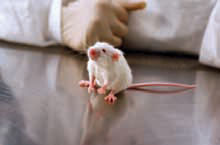 Call to study humans, not mice
Call to study humans, not mice‘Mice are lousy models for clinical studies’
– Professor Mark Davis, Director of the Stanford Institute for Immunity, Transplantation and Infection, California.
Prof Davis calls for a national or even international effort to collect information from human blood and tissue samples. He says:
‘We can’t depend on the mouse for all the answers, because in some cases it’s not giving us the right answers. But think about what we can do with people. People come to hospitals, get vaccinations, give blood and tissue samples for routine lab tests and clinical trials. We’re not learning nearly as much as we could from these samples. We seem to be in a state of denial, where there is so much invested in the mouse model that it seems almost unthinkable to look elsewhere.’
Reference: Immunity 29: 835, 19th December 2008.
Lung cancer still kills 30,000 people every year in the UK alone. By looking at patients’ blood, scientists have discovered that they can predict which patients are most likely to be resistant to treatment. This could help doctors to decide what sort of treatment a patient needs early on, help monitor progress and perhaps select patients for particular clinical trials.
Reference: BBC News online, 31st December 2008.
‘Previously our understanding of why this occurred could be compared with trying to fix a broken car without knowing how the engine worked’ – Dr Jason Carroll, Cambridge Research Institute
Research has previously shown that only women with certain genetic features will respond to anti-breast cancer drug Herceptin, and this finding has now been extended to another important treatment, tamoxifen. By studying tissues donated by cancer patients, scientists in Cambridge have discovered that they can predict the quarter of patients whose tumours will become resistant to tamoxifen, meaning that those patients can be treated with a more suitable drug from the start. The new test, which should be available within five years, stands to benefit thousands of women. Meanwhile, understanding how some tumours become resistant to drugs could help researchers to develop new anti-cancer treatments.
References: BBC News online, 13th November 2008;
New York Times, 29th December 2008.
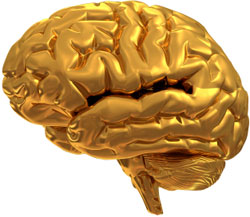 Childhood brain tumour clue
Childhood brain tumour clue‘We think this important finding will be vital in guiding our future research’ –Dr Lesley Walker, Cancer Research UK
The genetic root of an aggressive form of childhood brain cancer, pilocytic astrocytoma, has been uncovered by another group of Cambridge scientists who conducted genetic scans of patients’ brain tumours. It should now be possible to tailor treatments to patients more accurately, as scientists now have a way of differentiating between certain types of cancer. Also, because researchers know what genetic fault triggers the development tumour development, they can begin to construct treatments designed to specifically target the cause of the tumour.
Reference: BBC News online, 1st November 2008.
‘This is a hugely important development for the patients in terms of morale’ – Dr Willie Stewart, head of Institute of Neurological Sciences
Doctors from Glasgow’s Southern General Hospital have identified a way of profiling patients’ tumours in order to identify who would benefit most from radiotherapy, and who from chemotherapy. The researchers have discovered that tumours have different molecular ‘signatures’ or profiles that identify them as being more responsive to one treatment. This discovery means that many patients will be spared unnecessary side effects, and receive the most effective treatment as early as possible. More centres plan to offer the same tailored service soon.
Reference: BBC News online, 6th November 2008.